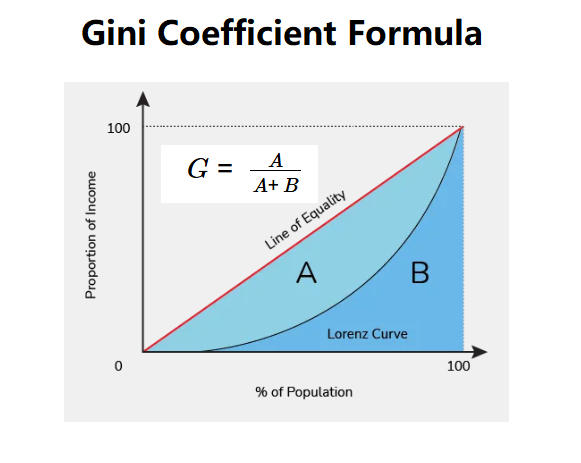 Home
Home
 Back
Back

Definition: The Gini Coefficient Calculator measures income inequality within a population using the ratio of the area between the Lorenz curve and the line of equality to the total area under the line of equality.
Purpose: Helps economists and policymakers assess income distribution and social equity trends.
The calculator computes the Gini coefficient using the following formula and steps:
Formula:
Steps:
Calculating the Gini coefficient is crucial for:
Example: Area A = 1,200 units², Area B = 3,800 units²:
A Gini coefficient of 0.24 indicates moderate income inequality.
Q: What is the Gini coefficient?
A: The Gini coefficient is a measure of income inequality, ranging from 0 (perfect equality) to 1 (perfect inequality).
Q: How is the Lorenz curve related to the Gini coefficient?
A: The Gini coefficient is the ratio of the area between the Lorenz curve and the line of equality (A) to the total area under the line (A + B).
Q: What does a Gini coefficient of 0.24 mean?
A: It suggests relatively low inequality, typical of developed economies, though context varies by region.